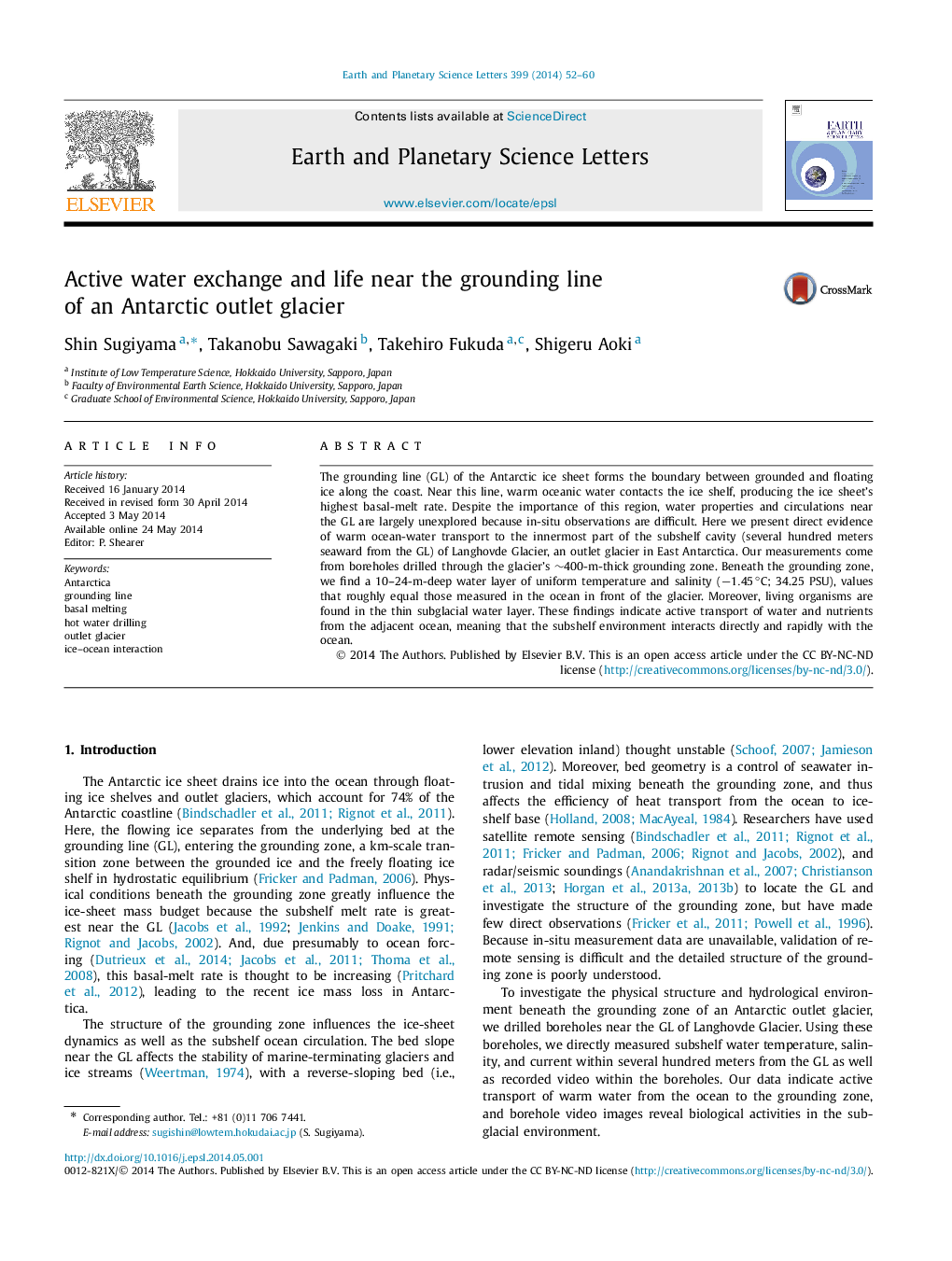| Article ID | Journal | Published Year | Pages | File Type |
|---|---|---|---|---|
| 6429241 | Earth and Planetary Science Letters | 2014 | 9 Pages |
â¢Boreholes were drilled in the grounding zone of an Antarctic outlet glacier.â¢Relatively warm (0.7â°C above freezing) water fills the subshelf water cavity.â¢Living organisms were found in the water cavity near the GL.â¢Basal melt rates of the ice shelf were estimated as 2.2-3.1 mâaâ1.â¢Seawater layer penetrates upstream of the GL estimated by standard methods.
The grounding line (GL) of the Antarctic ice sheet forms the boundary between grounded and floating ice along the coast. Near this line, warm oceanic water contacts the ice shelf, producing the ice sheet's highest basal-melt rate. Despite the importance of this region, water properties and circulations near the GL are largely unexplored because in-situ observations are difficult. Here we present direct evidence of warm ocean-water transport to the innermost part of the subshelf cavity (several hundred meters seaward from the GL) of Langhovde Glacier, an outlet glacier in East Antarctica. Our measurements come from boreholes drilled through the glacier's â¼400-m-thick grounding zone. Beneath the grounding zone, we find a 10-24-m-deep water layer of uniform temperature and salinity (â1.45°C; 34.25 PSU), values that roughly equal those measured in the ocean in front of the glacier. Moreover, living organisms are found in the thin subglacial water layer. These findings indicate active transport of water and nutrients from the adjacent ocean, meaning that the subshelf environment interacts directly and rapidly with the ocean.
Graphical abstractDownload high-res image (89KB)Download full-size image
